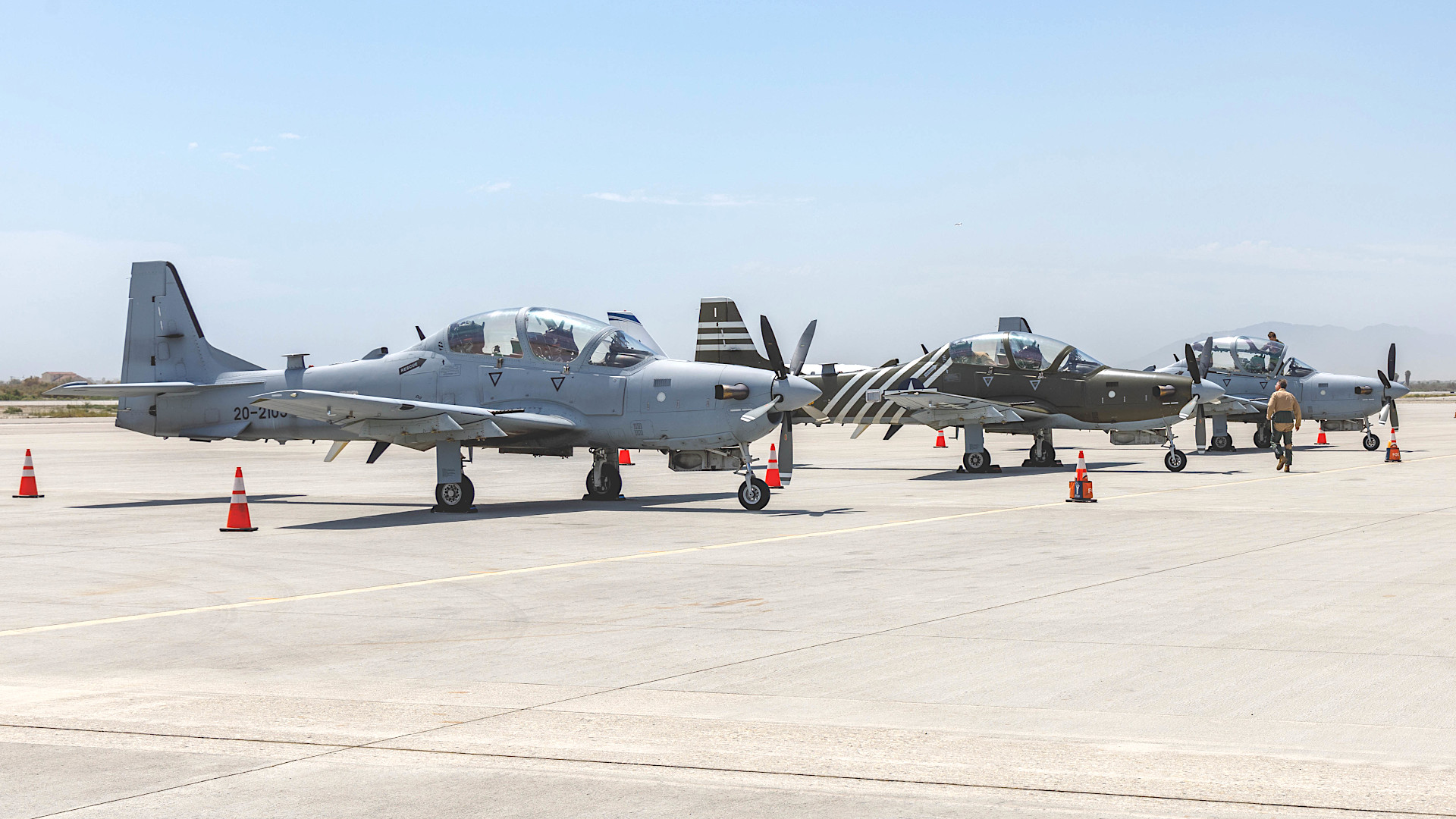The renowned U.S. Air Force Test Pilot School (USAF TPS) at Edwards Air Force Base in California has received a trio of Embraer A-29 Super Tucano two-seat single-engine turboprop attack planes, which it says are its first newly assigned aircraft in almost three decades. Originally acquired to help Air Force special operations aviators train their foreign counterparts, the A-29s are now set to be used for various testing purposes, including of new weapons and sensors.
The three A-29s touched down at Edwards back in July, but the Air Force’s 412th Test Wing, which is responsible for the USAF TPS, only officially announced their arrival today. Pictures released along with the announcement show that one of the Super Tucanos, seen below, is still wearing a special heritage paint scheme that pays homage to the World War II-era 1st Air Commando Group, which supported allied forces in the China, Burma, and India (CBI) theater. The other two A-29s have standard overall gray paint jobs. The Super Tucanos all still look to be configured as light attack aircraft with a .50 caliber machine gun in each wing and the ability to carry various munitions and other stores on any of five pylons, two under each wing and one underneath the fuselage. The A-29 also has the ability to mount a sensor turret containing electro-optical and/or infrared cameras underneath its fuselage.
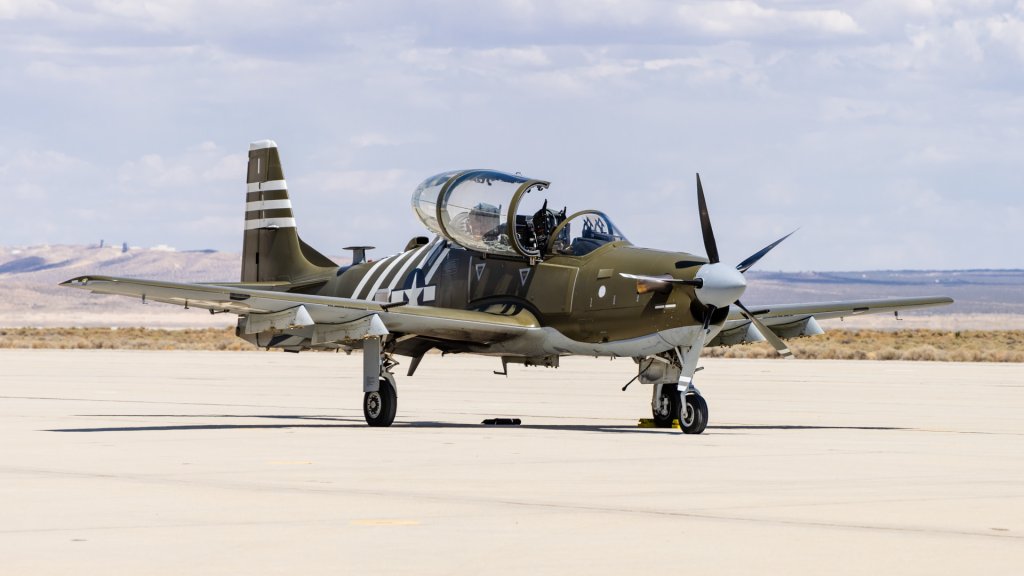
Air Force Special Operations Command (AFSOC) received the three A-29s starting in 2021 to support its Combat Aviation Advisor (CAA). However, the service subsequently decided to stand down its two dedicated CAA units, the 6th and 711th Special Operations Squadrons, ostensibly as part of a broader shift in the U.S. military to preparing for future high-end fights after decades of counter-insurgency and other lower-intensity missions. CAAs had been heavily utilized during the Global War on Terror era, as you can read more about in this feature from Task & Purpose. The Air Force had also notably helped facilitate the delivery of Super Tucanos to various allies and partners over the years, especially the now-defunct Afghan Air Force, and otherwise experimented with the type in the past.
As of last year, the Air Force’s plan had been to completely divest AFSOC’s A-29s, with one possibility being that they might get passed on to foreign countries. USAF TPS, which provides advanced flight training for experimental test pilots, flight test engineers, and flight test navigators, now seems to have eagerly accepted the orphaned turboprops.

“The Air Force Test Center and [Test Pilot] School leadership saw these excess aircraft as a unique opportunity to expand the flight test and training capabilities at Edwards,” according to today’s release from the 412th Test Wing.
“The decision to transfer A-29 aircraft to Edwards is a result of thoughtful analysis by the Test Pilot School and an excellent example of command agility and collaboration to take advantage of a unique, fleeting opportunity,” Michael Banzet, director of plans and programs for the Air Force Test Center, also said in a statement. “Not only does this repurpose a $63 million taxpayer investment, it also modernizes and expands TPS curriculum to accelerate the fielding of combat capability for the USAF.”
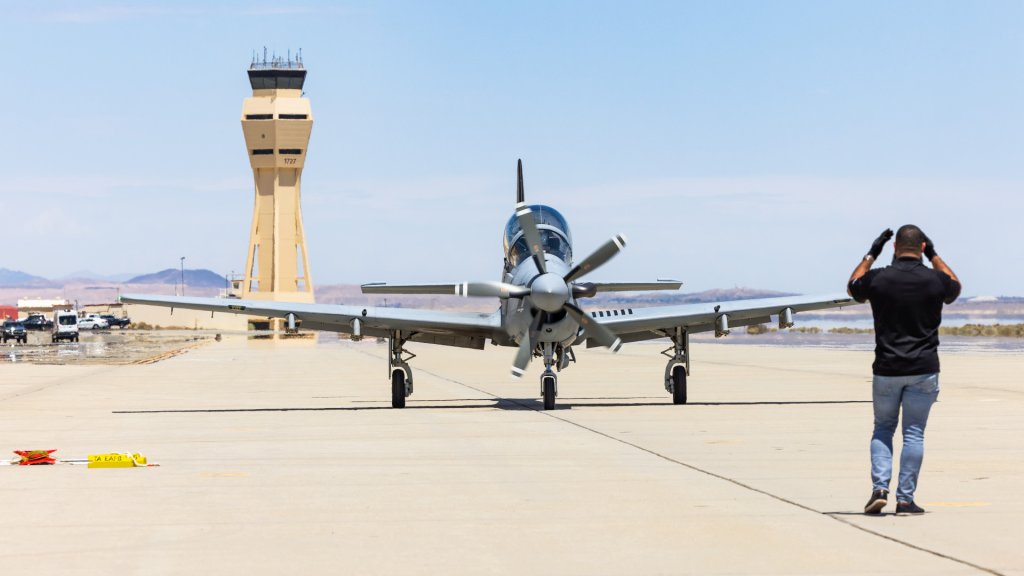
Interestingly, the Air Force has also explicitly cited the demands of the U.S. military’s new focus on future high-end conflicts as having helped drive this decision.
“As part of a broader shift in response to Global Power Competition, the Air Force Test Pilot School’s mission is evolving to meet strategic need,” the release from the 412th Test Wing says. “A refined three-pillar focus includes development of world-class staff, creating highly adaptive critical thinking test leaders, and advancing cutting-edge research.”
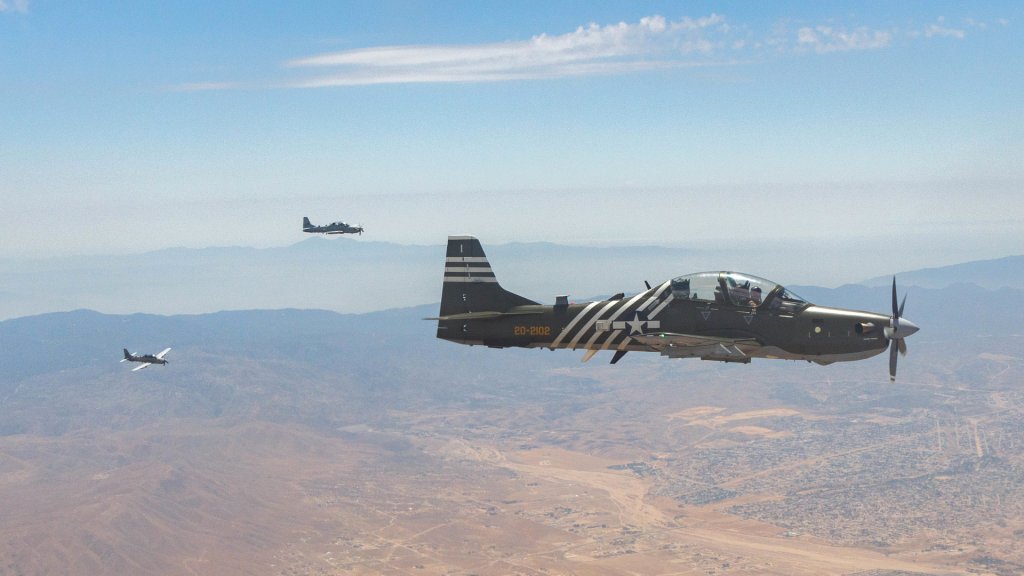
“While the A-29’s airframe design is perfect for spin testing, the Super Tucano also offers an array of modern avionics with the ability to externally hang equipment through various wing pylons,” it continues. “This will allow the school to conduct training and research on a variety of multi-domain sensors and weapons, reducing reliance on T-38 and F-16 aircraft while enhancing the ability to perform aspects of the developmental test mission tasked to the Air Force Test Center.”
In addition to T-38s and F-16s, the USAF TPS regularly makes use of Air Force C-12s, which are militarized variants of the twin-engine turboprop Beechcraft King Air family.
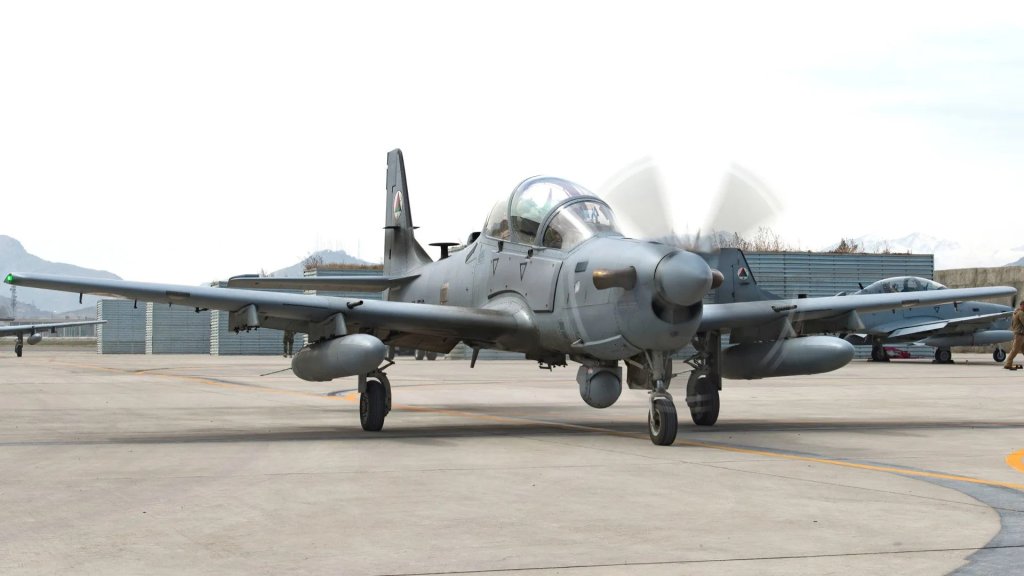
It’s also interesting to note here that around the same time AFSOC first acquired the three A-29s, the Air Force also purchased a pair of Beechcraft AT-6E Wolverines to support light attack experimentation efforts. The Wolverine is based on the T-6 Texan II trainer, which is in service with the Air Force and the U.S. Navy. This included work on a low-cost communications and data-sharing architecture intended primarily for American allies and partners called Airborne Extensible Relay Over-Horizon Network, or AEROnet. The two-seat single-engine turboprop AT-6E is similar, but also different in many respects to the Super Tucano, as you can read more about here. The current status of those aircraft is not immediately clear.

The acquisition of the AT-6Es had evolved from a succession of abortive Air Force light attack aircraft programs starting around 2017, which had in turn followed on-again-off-again interest in such a capability dating back even further. Those efforts have since evolved into U.S. Special Operations Command’s Armed Overwatch program and the OA-1K Sky Warden, a light attack derivative of the Air Tractor AT-802 crop duster, which you can learn more about here.
The arrival of the A-29s certainly comes at a particularly significant moment in time for USAF TPS. It is very actively involved at present in supporting work on artificial intelligence (AI), autonomous capabilities, and other advanced uncrewed aircraft efforts. This includes a milestone AI-driven dogfight involving the school’s specialized X-62A test jet, a highly modified two-seat F-16D, earlier this year. Many of these developments are feeding into other programs, such as the Air Force’s Collaborative Combat Aircraft (CCA) effort.

In this context, especially, using the A-29s to help free up F-16s, including the specialized X-62A, as well as T-38s for testing that requires their higher performance and other capabilities, makes good sense. The Super Tucanos do still offer high degrees of agility and performance, but at speeds closer to the USAF TPS’ C-12s, allowing them to carry out tasks that fast jets simply cannot. The A-29s also have robust avionics packages that can be altered for all different test purposes.
The A-29s give USAF TPS organic assets that are dissimilar from ones in widespread use in the U.S. military, as well. The school often contracts out for such aircraft to give students familiarity in a broader array of types.
The speed and performance of the Super Tucanos would also make them well suited to acting as chase planes for drones.
In addition, F-16s and T-38s could just have to fly less thanks to the arrival of the A-29s, helping to reduce operating costs and wear and tear on those jets. The Super Tucano offers a platform that is less expensive to fly, in general, regardless of what tasks it might be given.
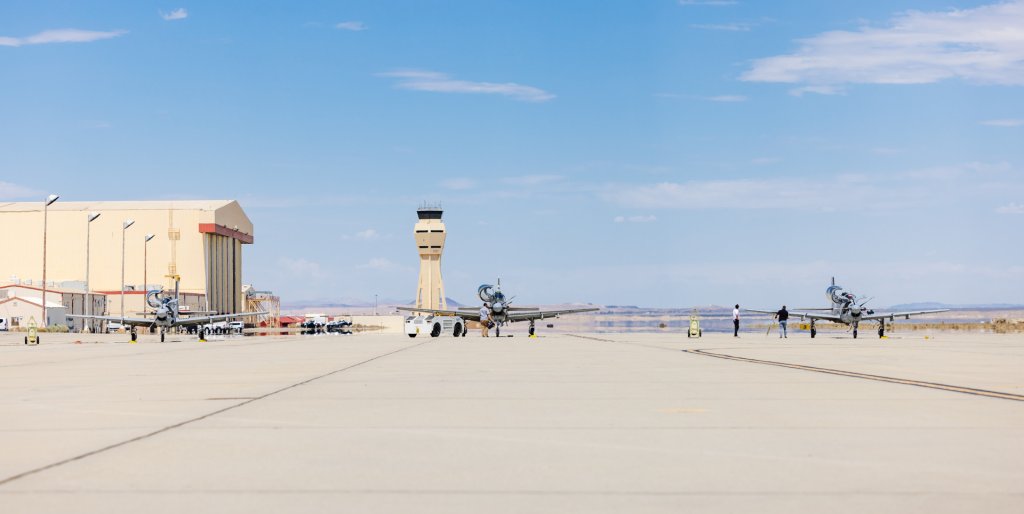
If nothing else, the three ex-AFSOC A-29s are now entering a completely different chapter in their service to the Air Force.
Contact the author: thomas@thewarzone.com
